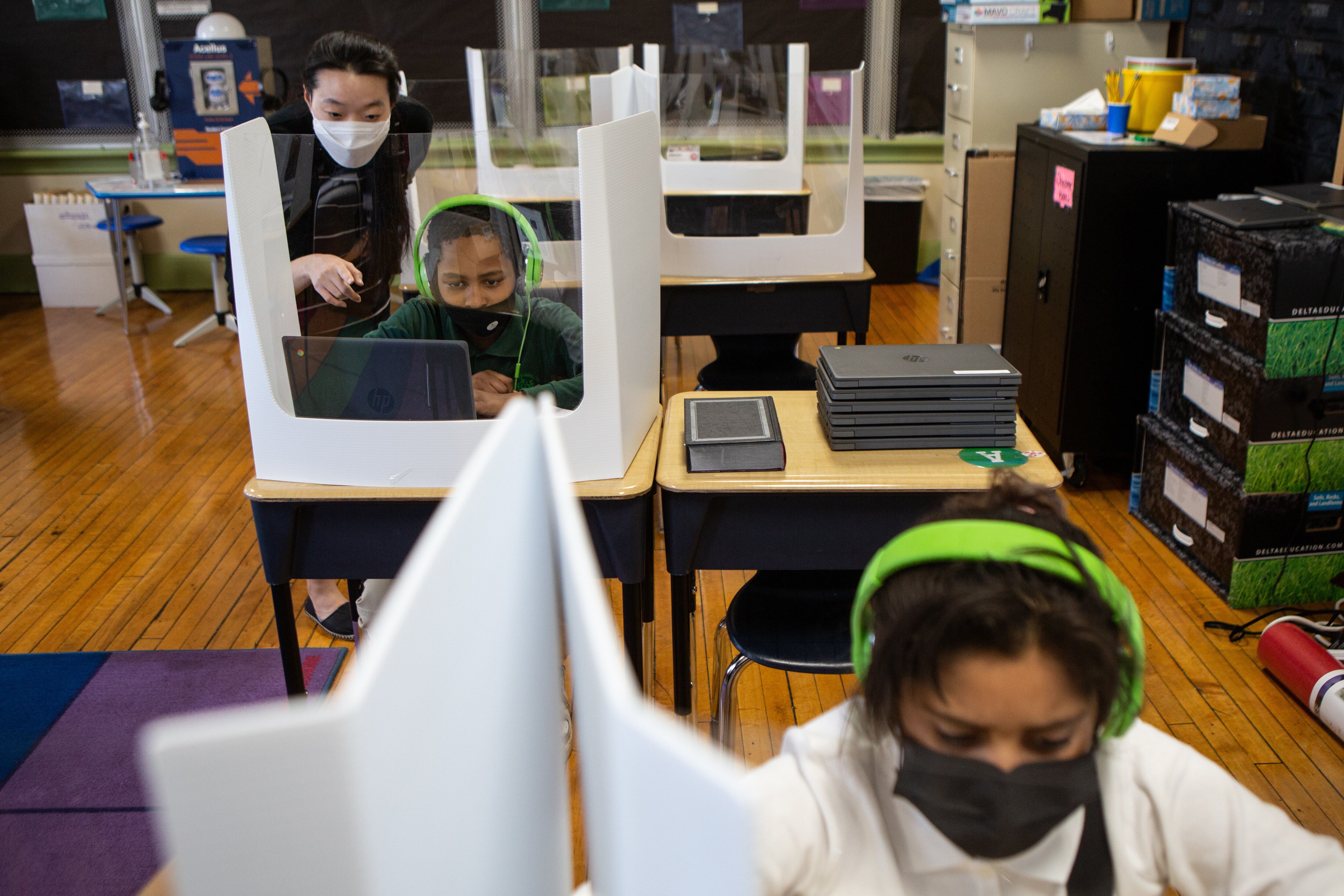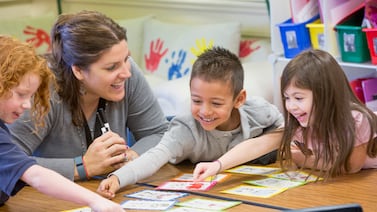New Jersey will not require students to wear masks when they return to school this fall, though masks are “encouraged” for unvaccinated people, according to guidelines released Monday.
The new state guidelines offer suggestions for how schools can safely reopen this fall, when Gov. Phil Murphy has ordered all schools to resume full-time in-person learning. In addition to urging non-vaccinated people to keep wearing masks, the guidelines also suggest that students stay physically distanced inside classrooms and districts track which employees and students have been vaccinated.
But officials emphasized Monday that the safety protocols issued by the state health and education departments are recommended but not mandatory, leaving districts to create their own policies based on local conditions. While the recommendations offer districts flexibility, they also shift the burden of assessing health conditions to local officials. The state was criticized for this kind of decentralized approach this past school year, when districts devised their own reopening plans.
In Newark, officials have already said they will require universal masking this fall.
Murphy added that schools must physically reopen even if they can’t follow every suggested protocol.
“If you can’t meet the recommendation, we still need you to open,” he said during a Monday press briefing.
The state guidelines say:
- Masks are recommended for non-vaccinated people inside schools, but are mandatory on school buses.
- Districts should promote vaccination for staff and eligible students (currently, those age 12 and up), and are “encouraged” to track each person’s vaccination status.
- Schools should try to keep students 3 feet apart in classrooms “to the extent possible.”
- Schools should consider ways to reduce group sizes at lunch, such as having students eat at staggered times, outdoors, or in classrooms.
- Schools should disinfect daily high-touch surfaces, including desks, doorknobs, and computer keyboards.
Districts were required to post fall reopening plans this month to access federal funding. Newark’s plan is similar to the one it released last school year, with the major exception that remote learning is no longer an option for students unless there is a COVID outbreak.
Newark’s plan for the 2021-22 school year says:
- School employees, students, and visitors will continue wearing masks.
- Students will be “encouraged” to socially distance in classrooms, and sneeze guards will remain on desks.
- Students will be allowed to move between classrooms, which the district prohibited this spring.
- Staff members must submit a negative COVID test before returning to work, but the district did not say it will provide weekly COVID testing for all students and employees as it did this spring.
At a school board meeting last week, district officials said parts of the plan might change.
“As we go through the month of September and we monitor conditions, we may loosen up on some of those,” said Newark Public Schools Deputy Superintendent Nicole T. Johnson, who was the co-chairperson of the district’s reopening task force.
The district also plans to continue its arrival protocols for students and staff, aincluding screening for symptoms, which can be done on paper or via an app; temperature checks; and hand sanitization.
“The safe return plan outlines what is our best understanding given what we know today of what school will look like in September,” Superintendent Roger León said at the meeting.
In an effort to increase vaccination rates in the city and across schools, the district began holding weekly vaccination clinics at some schools, including Malcolm X Shabazz High School (on Fridays) and East Side High School (Mondays and Tuesdays). RWJ Barnabas Health also set up a weekly vaccination clinic, specifically for teens ages 12-19, at Clara Maass Medical Center in Belleville, the district said.
“We don’t know what’s going to occur during the summer months but we’re hopeful that the trends we have [this summer] are better than what they were last school year,” León said
State officials said their guidelines could also change as the U.S. Centers for Disease Control and Prevention issue new recommendations, particularly around masking, for the coming school year.
“This is our best sense of what back-to-school looks like,” Murphy said, adding that officials “reserve the right to revisit some of this” based on CDC guidance and the trajectory of the pandemic.
The state also released a self-assessment tool that districts can use to determine whether they’re ready for full-time in-person learning, and strategies to address pandemic-related learning gaps.







